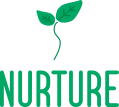“Food and Fun” is simply a way to get kids excited about attending a nutrition education/wellness class. Who doesn’t like Food and Fun? The idea here is to choose materials and programming that offer hands-on learning opportunities. If your school policies allow it, having children prepare and taste their own foods is often the best way to make sure that they try them!*
This video demonstrates what “Food and Fun” means at Nurture Idaho:
In addition to the Nurture Elementary Nutrition and Wellness Program (ENWP) materials, here are some of our favorite resources to help with a “food and fun-type” program:
| Dig In Curriculum from Team Nutrition | Dig In! is designed to be accessible for the novice gardener and will work in a variety of climates and in small or urban spaces. The Gardening Guide provides important information and resources, a planting schedule, gardening tips and techniques, and advice on growing, maintaining, and harvesting a school garden. There are posters and a parent handbook which can be ordered for free. The ten lessons are targeted to 5th and 6th graders but can be adapted:
|
| Edible Schoolyard Project | Formerly known as (Alice Water’s) Chez Panisse Foundation, the Edible Schoolyard Project has an expanded mission of building and sharing an edible education curriculum for kindergarten through high school. The Edible Schoolyard project bolsters edible education in programs across the country through its extensive online network and resource center. |
| MyPlate Kids PlaceServing up MyPlate: A Yummy curriculum | Designed for children ages 8 to 12, which can also help parents and educators make better and healthier food choices. It includes games, activity sheets, recipes and tips, in addition to links to the ChooseMyPlate.gov website. Adults can encourage kids to become MyPlate Champions by taking the MyPlate Champions Pledge, available at MyPlate Kids’ Place. Kids who pledge to be a MyPlate Champion make a promise to themselves to eat healthy and be active every day. |
| Nutrition Detectives | Nutrition Detectives™ is an innovative program for elementary school children. It shows them "5 clues" to read food labels and detect marketing deceptions while learning to identify and choose healthful foods. The program is novel, engaging, and efficient, imparting crucial information in minimal time. It can be presented using either a DVD video presentation (with Dr. Katz teaching students in a "magical" classroom setting), or as a PowerPoint slide show. The presentation is followed by a hands-on activity in which children apply their "detective" skills with real food packages. |
One of the best messages to send kids is to Eat a Rainbow. There are lots of great resources out there, but we wanted to list a few:
- Cando’s Eat More Fruits and Veggies parent handout
- Jamie Oliver Foundation’s Learn Your Fruits and Vegetables program.
- Produce for Better Health Foundation’s resources including:
- -All Forms Tool Kit. The kit contains consumer columns, radio scripts, reproducible handouts, a list of our videos (by form), a list of our 'real food' photos (by form), social media posts, and graphics.
- -Fruit & Veggie Connection Magazine: The first edition of our new print/electronic magazine for health professionals (announced 8/2013), Fruit & Veggie Connection, is now available here (The file is quite large, so be patient when downloading). This publication is meant to be a reference for health professionals about fruit and vegetables.
- -Pesticide Residues: What to Communicate to Consumers. They have posted the recording and slides of a recent webinar (2013).
 Nurture resources, including:
Nurture resources, including:
- Lesson: Fruits and Veggies
- Fruits and Veggies Parent Handout
- Lesson: Fitting in More Fruits and Veggies
- Fitting in More Fruits and Veggies Parent Handout
- Fruit and Veggie Challenge
- Calculating Fruit and Veggie consumption
- Lesson: Eat a Rainbow
- Eat a Rainbow Parent Handout
- Rainbow Riddles
- The Lunchbox.org’s Rainbow Day packet. Great for school administrators and Food Service Professionals on how to plan a Rainbow Day.
- Today I ate a Rainbow’s resources, including kids, songs, stickers and more!
Please watch our video about Rainbow Day at Community School of Sun Valley, Idaho:
*Recent studies show that hands-on tasting opportunities are superior to education alone when encouraging kids to increase fruits and veggie intake. An American Journal of Clinical Nutrition study examined whether providing a variety of familiar vegetables or fruit to preschool children as a snack would lead to increased selection and intake.
The children were offered a single type (cucumber, sweet pepper, or tomato) or a variety of all 3 vegetable types, and fruit (apple, peach, pineapple, or all 3 types). Uniform-sized pieces were served family style, and children selected and ate as much as they desired. The children chose some pieces in 94% of snacks with variety and in 70% of snacks without variety. This form of presentation significantly increased overall intake.
A study in the Journal of the Academy of Nutrition and Dietetics found that exposing kids to fruits and veggies seem to work better than educating. Students in an Educational Material group (EDUC) received a weekly educational program for increasing awareness and improving skills regarding fruit preparation/consumption. Students in the Exposure group (EXPO) were exposed to the consumption of a fruit on a daily basis by their teacher, and a control group did not receive any intervention. Higher fruit intake was reported by the children in the EXPO and the EDUC groups compared with the control group. However, at one year of follow-up, only the EXPO group remained significant.

